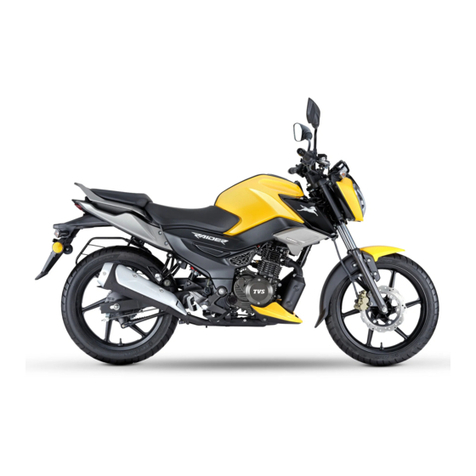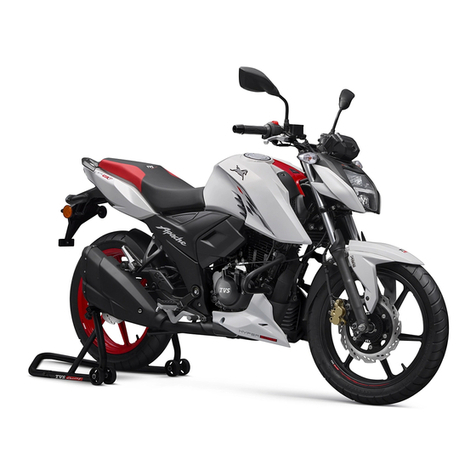TVS Apache RTR 200 4V 2021 User manual
Other TVS Motorcycle manuals
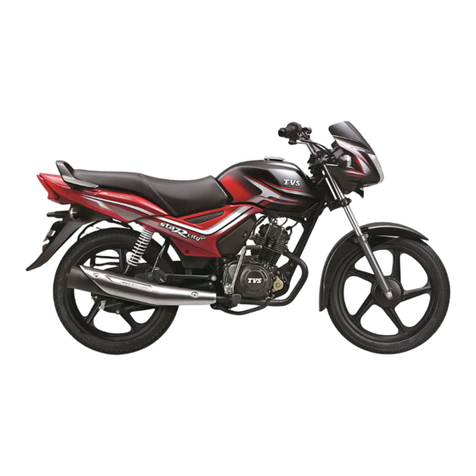
TVS
TVS StaR City+ User manual
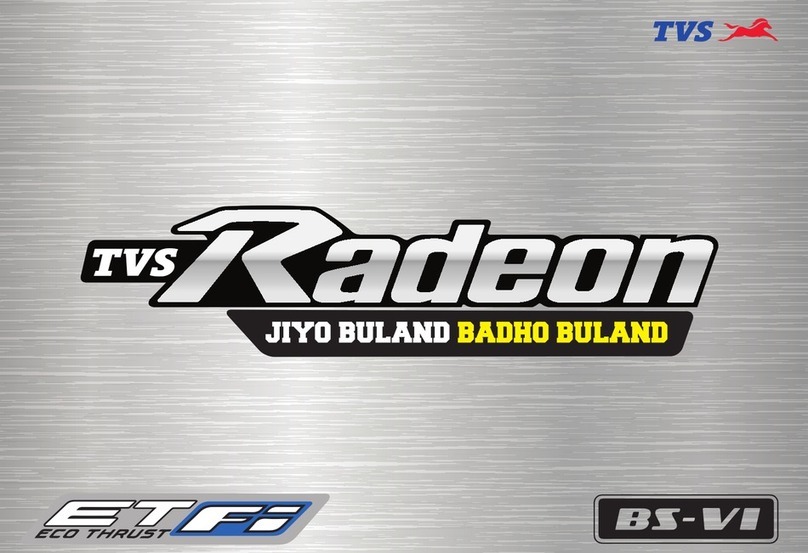
TVS
TVS ETFi VS-VI Radeon User manual
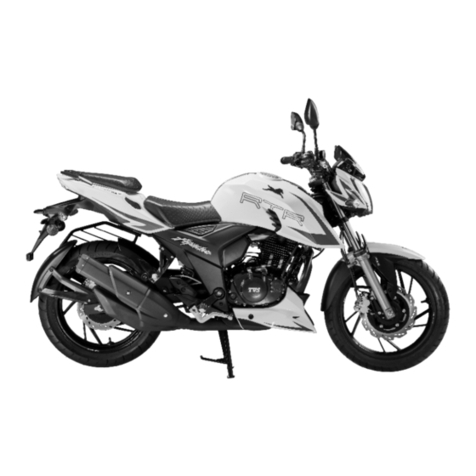
TVS
TVS Apache RTR 200 Fi4V with ABS User manual
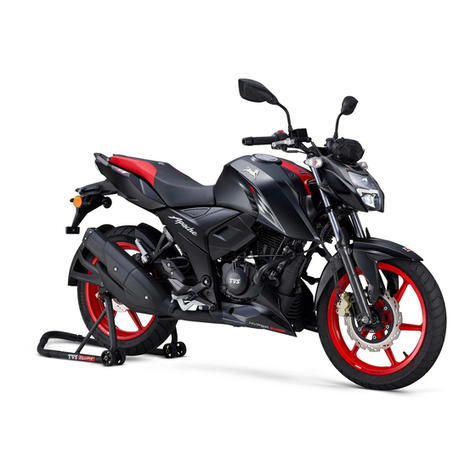
TVS
TVS Atache RTR160 4V User manual
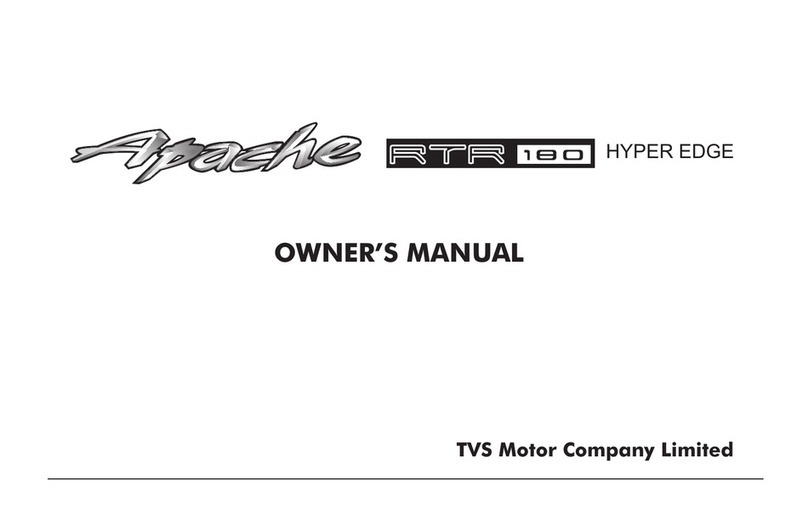
TVS
TVS Apache RTR 180 Hyper Edge User manual
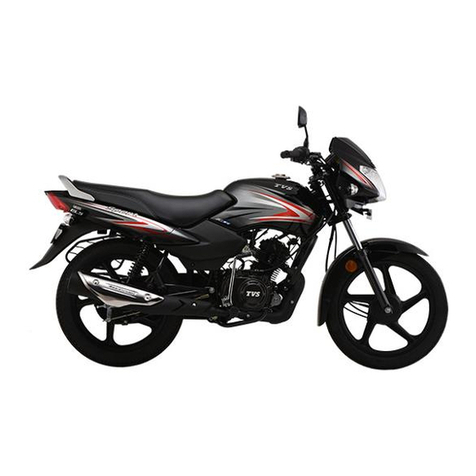
TVS
TVS Sport User manual
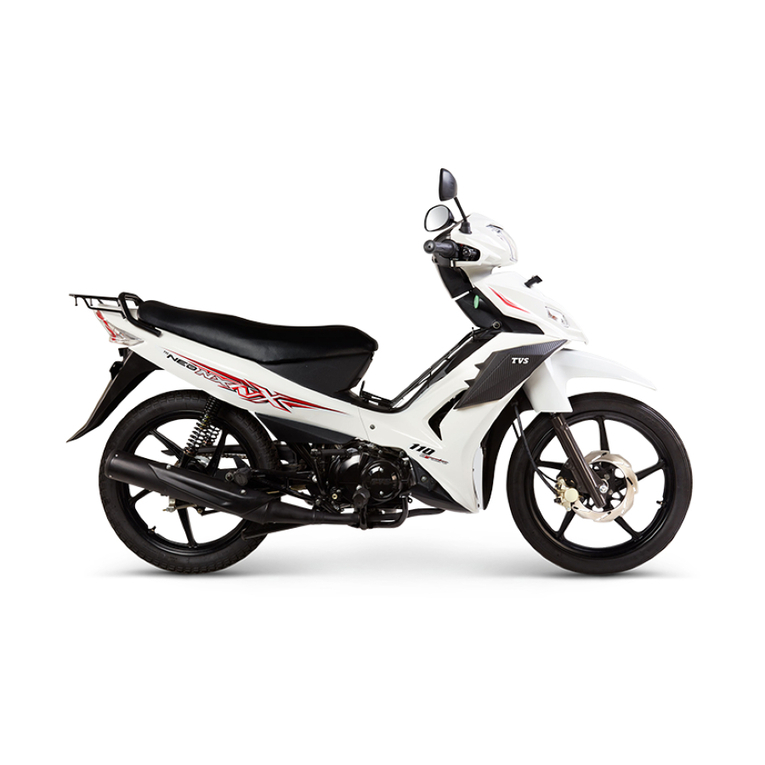
TVS
TVS NEO Series User manual

TVS
TVS Sport User manual

TVS
TVS NTIRQ 125 RACE XP PLAY SMART User manual
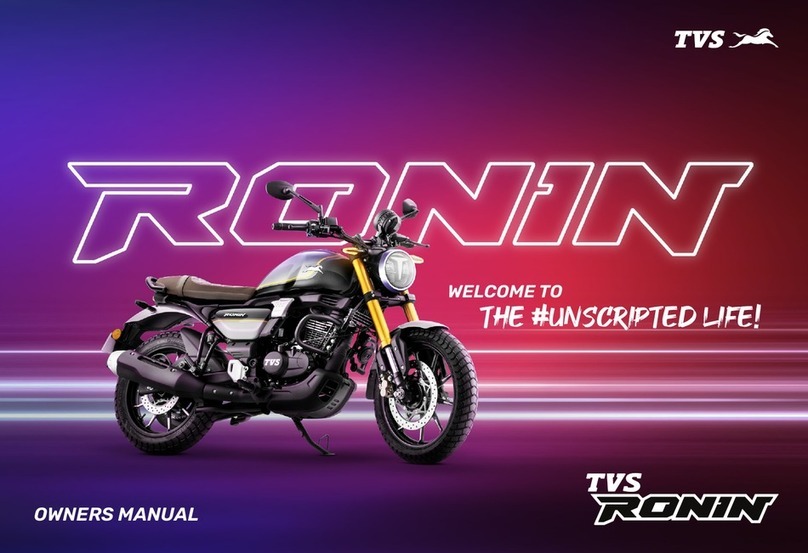
TVS
TVS RONIN User manual

TVS
TVS Apache RTR 160 BS-VI User manual
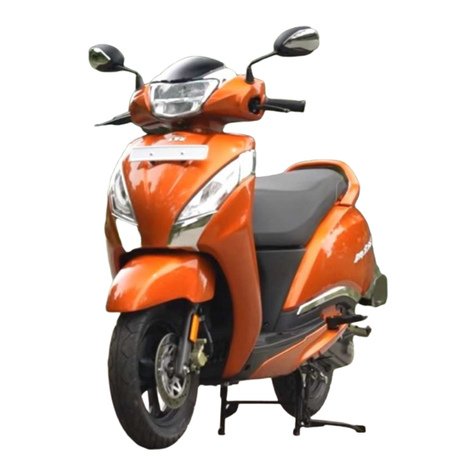
TVS
TVS JUPITER 125 User manual
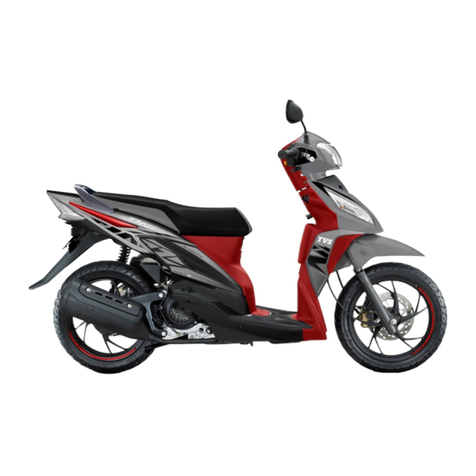
TVS
TVS DAZZ User manual
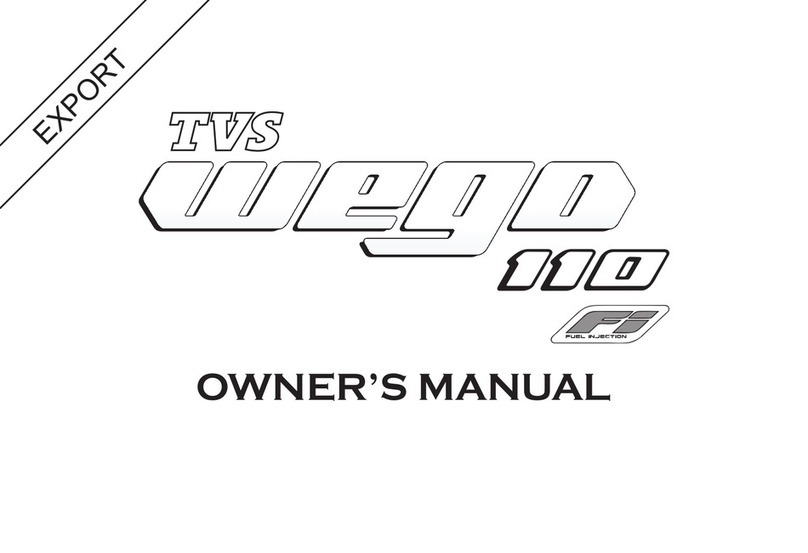
TVS
TVS WEGO 110 Fi User manual
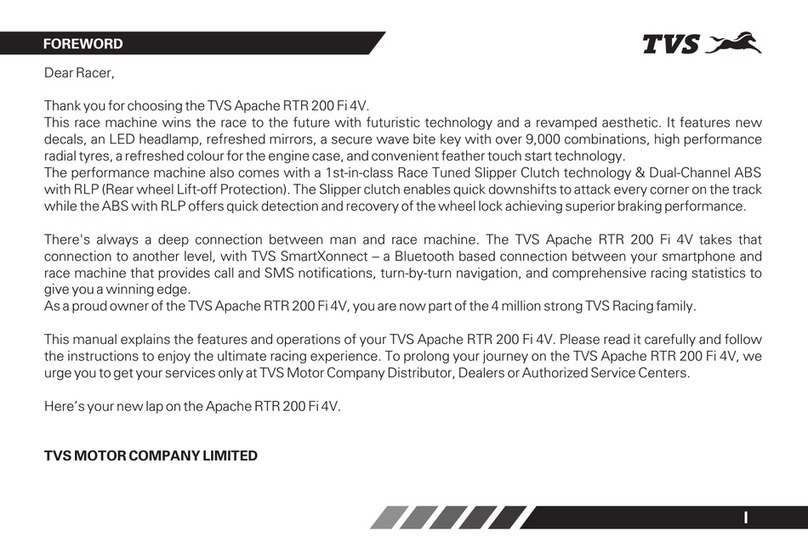
TVS
TVS APACHE RTR 200 Fi 4V User manual
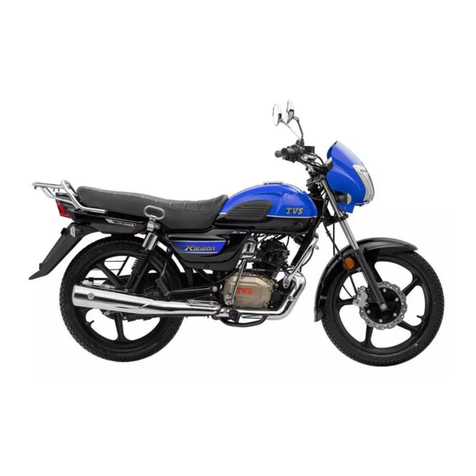
TVS
TVS Radeon User manual
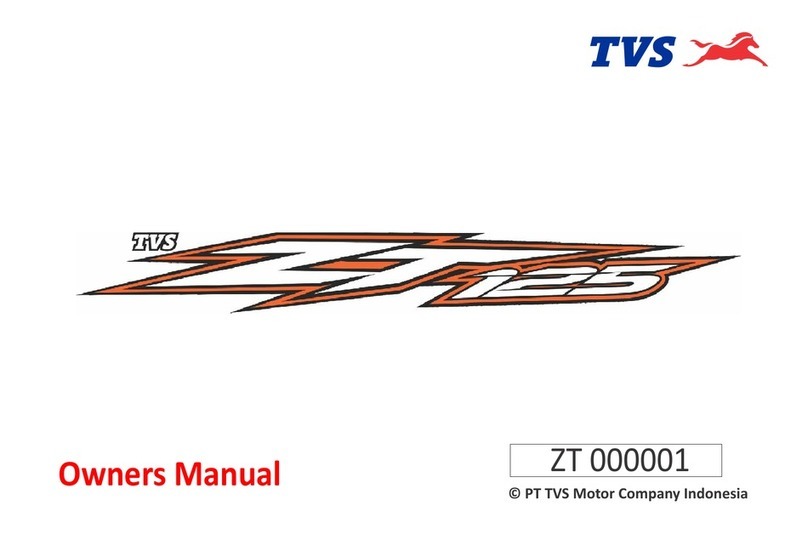
TVS
TVS ZT125 User manual
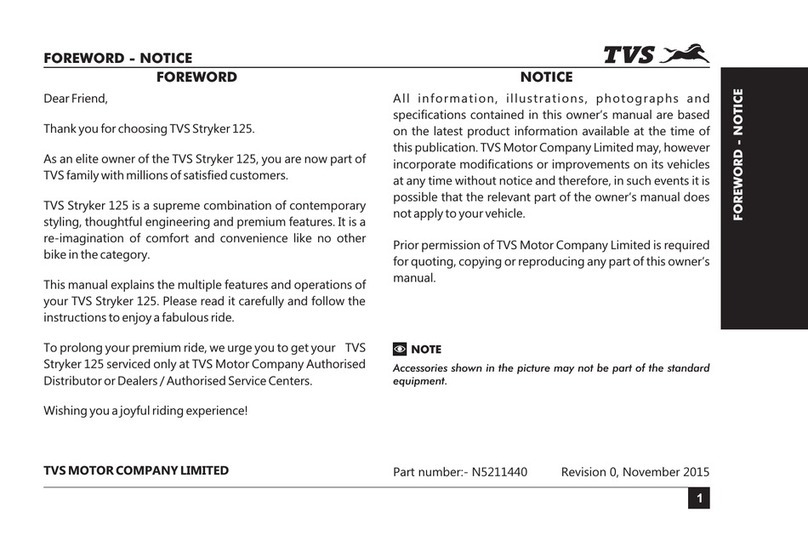
TVS
TVS Stryker 125 User manual
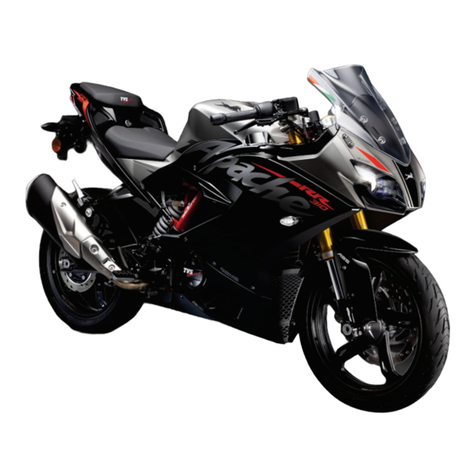
TVS
TVS Apache RR 310 User manual
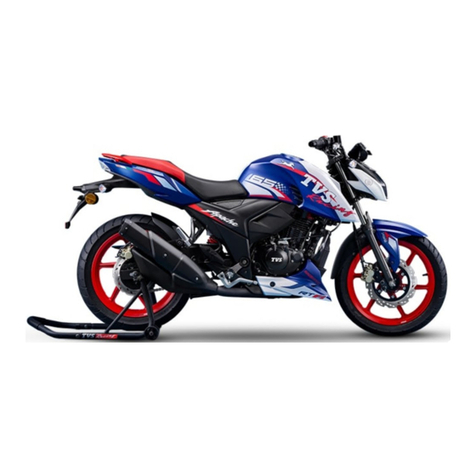
TVS
TVS RTR 165 RP User manual
Popular Motorcycle manuals by other brands

MV Agusta
MV Agusta Brutale 675 Workshop manual

APRILIA
APRILIA RSV MILLE - PART 1 1999 User manual content

Royal Enfield
Royal Enfield Himalayan 2018 owner's manual

SSR Motorsports
SSR Motorsports Lazer5 owner's manual

MOTO GUZZI
MOTO GUZZI 2005 Griso 1100 Use and maintenance book

KTM
KTM 85 SX 19/16 owner's manual
